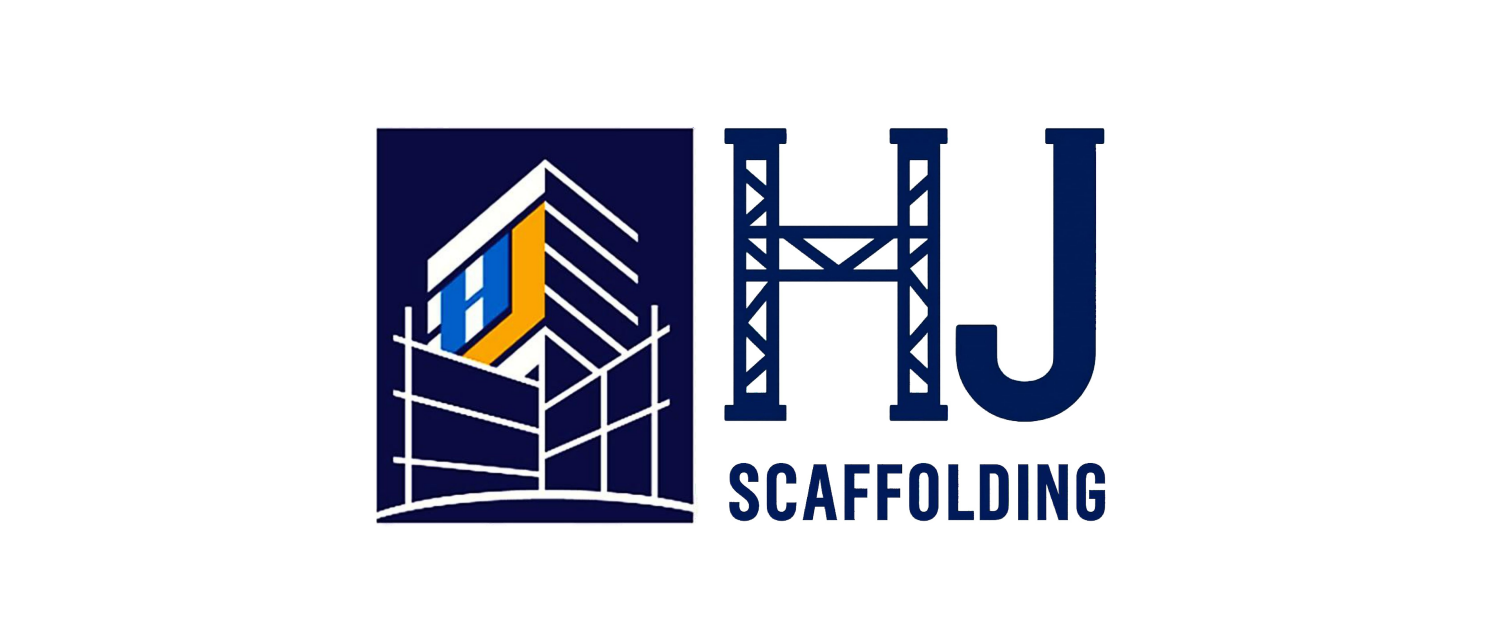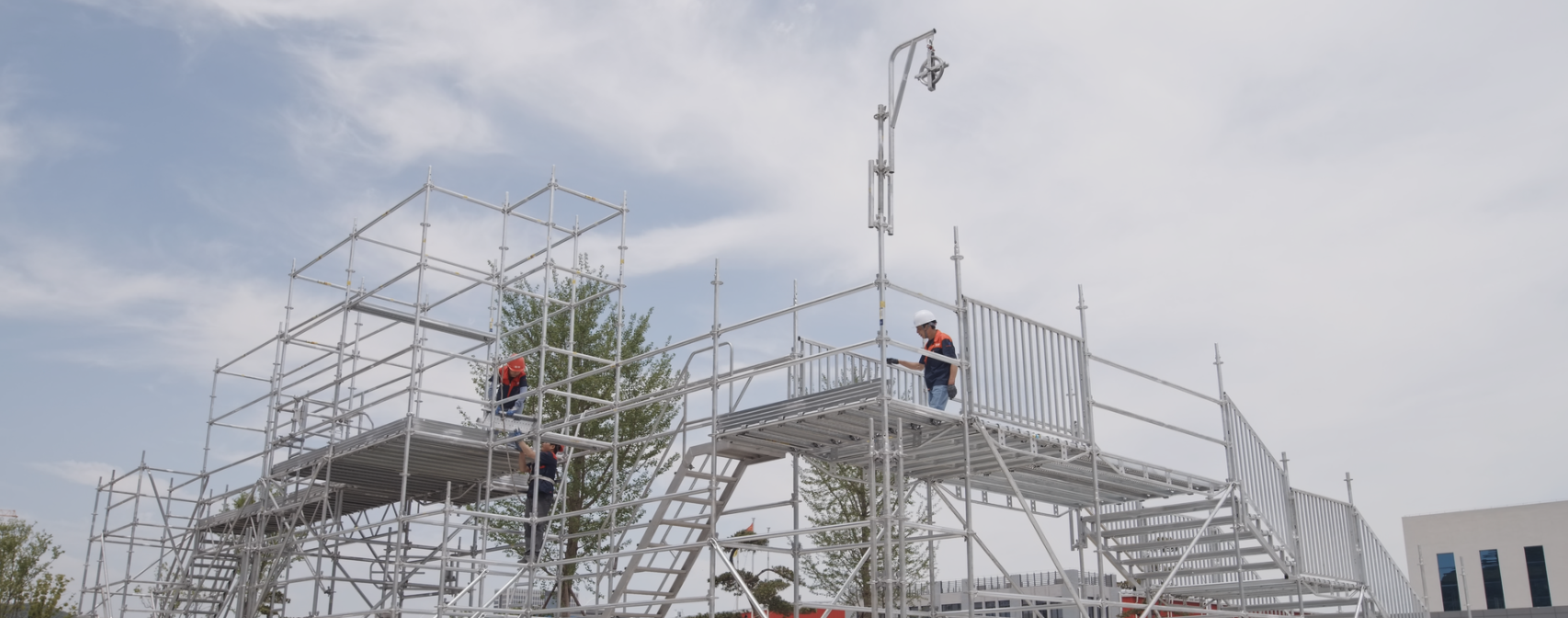
Differences and Selection Advice for Ringlock, Cuplock, and Kwikstage Scaffolding
Differences and Selection Advice for Ringlock, Cuplock, and Kwikstage Scaffolding
In construction, the right scaffolding system can significantly impact project timelines, safety, and cost-efficiency. For procurement professionals and project managers, selecting between Ringlock, Cuplock, and Kwikstage requires a clear understanding of their design principles, performance, and best-use scenarios.
Ringlock scaffolding, in particular, offers up to three times the durability and approximately 30% lower lifecycle costs compared to Cuplock and Kwikstage, making it a preferred long-term investment in demanding projects.
Before diving into detailed comparisons, let’s first understand the basics of each system:
Ringlock Scaffolding: Modular Precision for Complex Builds
Ringlock scaffolding is a multi-purpose modular scaffolding system centered around a circular rosette welded to vertical standards. Each rosette offers eight connection points, allowing for flexible assembly angles and secure, tool-free locking with wedge pins. Only two or three workers are required to install or dismantle the system, making it both time- and labor-efficient. It can be flexibly assembled into modular scaffolding, birdcage scaffolding, suspended scaffolding, mobile scaffolding, and supported scaffolding.
Characterized by its ability to handle high loads and accommodate complex geometries, Ringlock scaffolding is ideal for high-rise buildings, industrial maintenance, bridges, domes, spires, tunnels, and shipbuilding. Its integrated diagonal braces enhance stability and minimize lateral force risks, ensuring safety even in the most demanding environments.
Ringlock scaffolding system
Cuplock Scaffolding: Efficient and Reliable for Repetitive Structures
Cuplock is particularly effective in standardized and repetitive construction environments. Its rigid structure supports strong vertical alignment, making it a top choice for projects such as commercial towers, residential buildings, and infrastructure work with consistent layouts and minimal design deviation.
Cuplock scaffolding system
Kwikstage Scaffolding: Practical Simplicity for General Access Work
Kwikstage scaffolding system
Comparative Analysis: Which System Fits Your Project?
After understanding the basics of each system, it’s important to compare them side by side across critical project considerations. Below is a breakdown that will help you choose the right fit based on your priorities.
1. Connection Mechanism
Ringlock: Features circular rosettes that allow eight connection angles for ledgers, braces, and transoms. Wedge pins lock components without tools, increasing assembly speed and precision. According to Horizonform’s system review, these features reduce setup time by up to 40% compared to traditional tube-and-coupler systems.
Cuplock: Cup-and-blade design connects up to four ledgers at each joint. Fast and reliable for standardized layouts.
Kwikstage: Uses wedge and V-press connections, allowing quick setup. Best suited for uncomplicated, small-scale tasks.
Recommendation: Choose Ringlock when complex design or speed is key. Cuplock and Kwikstage offer simplicity and efficiency for repetitive or low-rise tasks.
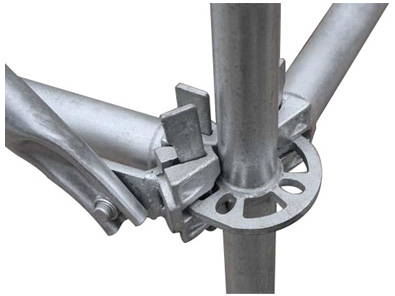
Ringlock scaffolding
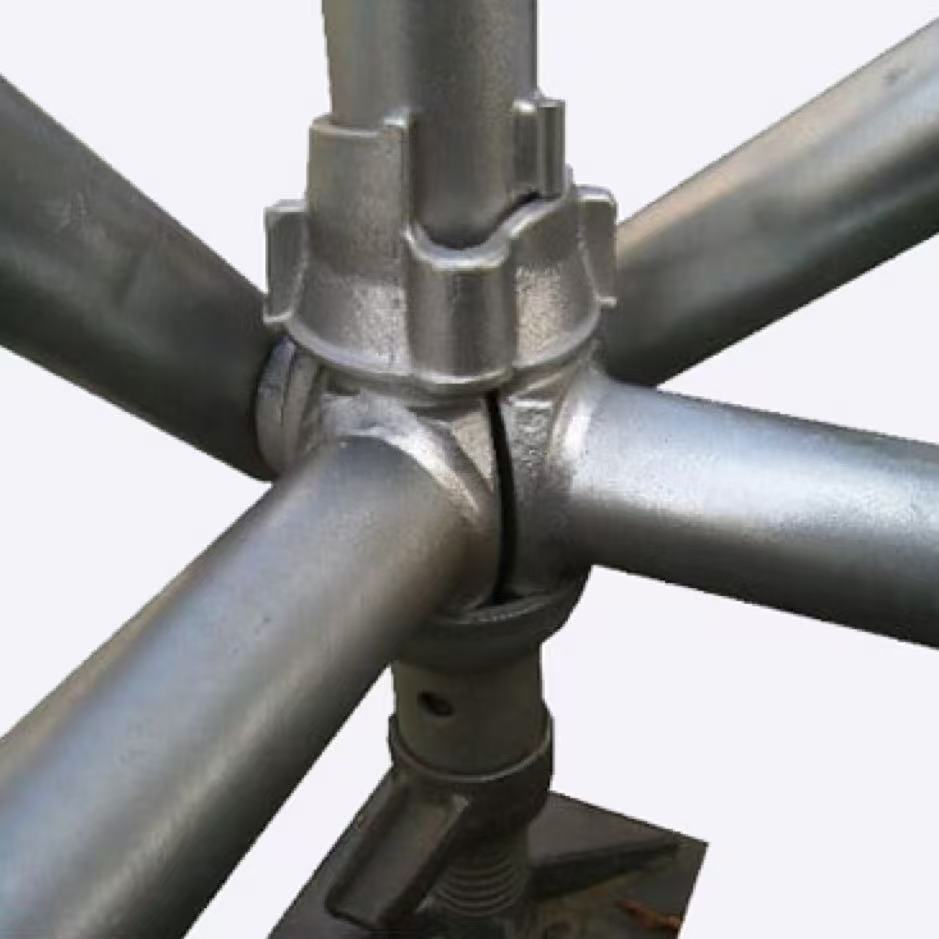
Cuplock scaffolding
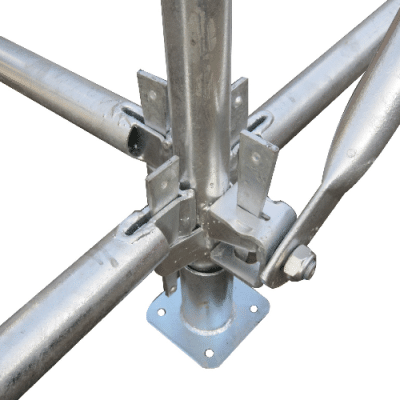
Kwikstage scaffolding
2. Assembly Speed & Labor Requirements
Ringlock: Minimal tools required. Fastest setup and dismantling time. Two or three workers can handle most configurations. According to ADTO Group, Ringlock achieves 182 m³/day in erection speed and 240 m³/day in dismantling—more than double Cuplock's rate.
Cuplock: Easy to learn, but slower than Ringlock in projects with non-repetitive layouts. Moderate labor required. Average erection and dismantling speed: 105 m³/day.
Kwikstage: Also tool-free and simple, but may be slower on larger or more variable structures.
Recommendation: Ringlock stands out for rapid assembly, making it ideal for high-efficiency sites. Cuplock and Kwikstage work well when labor availability is not a constraint.
Ringlock’s superior speed is not only evident on construction sites but also in global competitions. At the ScaffChamp 2025, Lithuania’s RNDV Industries claimed first place by completing a full Ringlock system setup in just 1 hour, 37 minutes, and 24 seconds, showcasing the system’s efficiency under pressure.
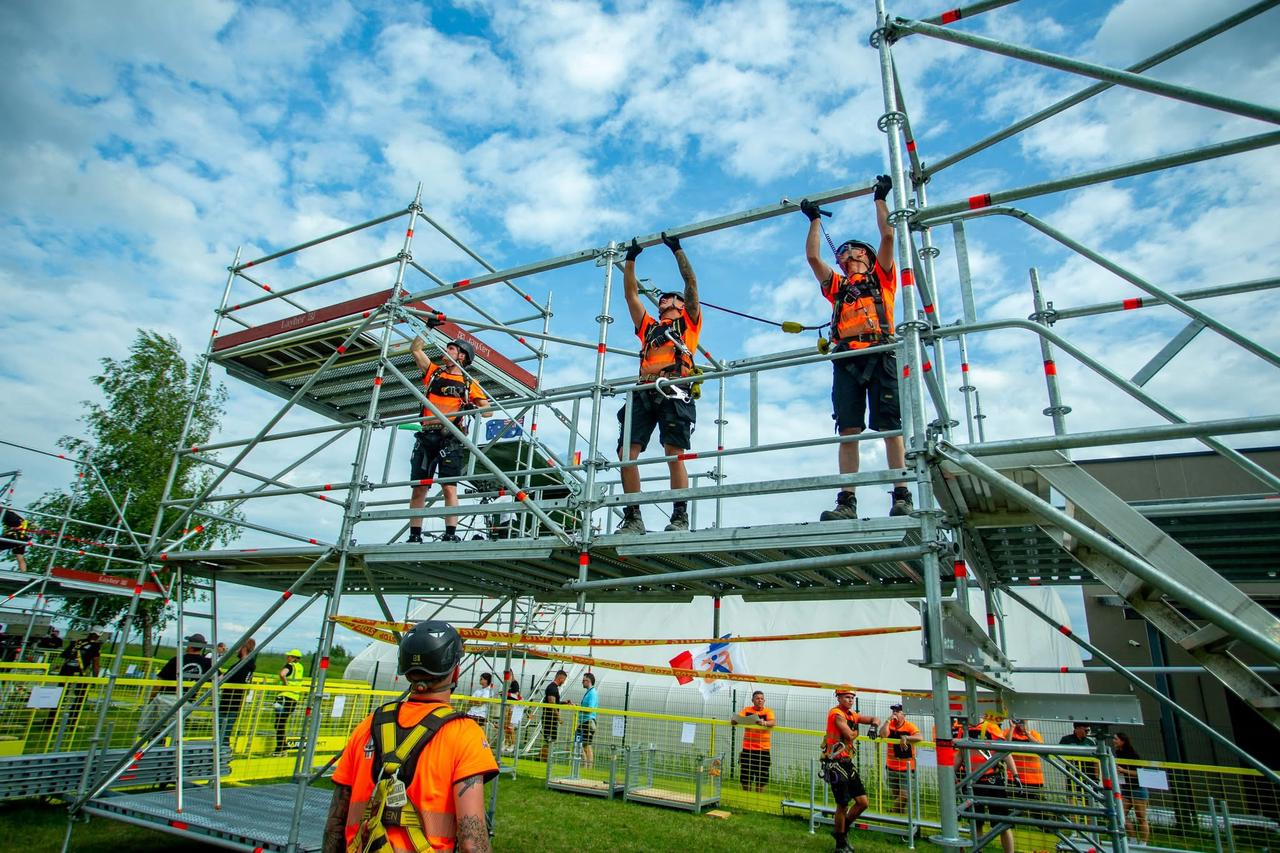
Image courtesy of ScaffChamp, powered by Layer. The scaffold shown is a Ringlock system.
3. Flexibility & Adaptability
Ringlock: Adapts to challenging terrains and non-linear forms, perfect for bridges, stadiums, and complex industrial jobs. According to Horizonform testing, Ringlock systems maintain stability on slopes up to 30°, outperforming Cuplock by a margin of 15°.
Cuplock: Performs well in modular and repetitive settings but lacks flexibility for unconventional shapes.
Kwikstage: Best for flat surfaces and simple building layouts.
Recommendation: If your site has unusual shapes or changing levels, Ringlock is the ideal choice. Cuplock and Kwikstage are more effective in conventional environments.

Ringlock scaffolding

Cuplock scaffolding

Kwikstage scaffolding
4. Durability & Lifecycle Cost
Ringlock: Ringlock components undergo hot-dip galvanizing, providing excellent corrosion resistance and extending the system’s lifespan to over 15 years in typical construction environments. High structural strength reduces the need for frequent replacements or repairs. According to industry equipment rental reports, Ringlock scaffolding systems have an average lifecycle approximately three times longer than traditional scaffolding, lowering overall maintenance and replacement costs.
Cuplock: Cuplock offers good structural reliability but generally has a shorter service life of 8 to 10 years due to less effective corrosion protection. Frequent assembly and disassembly may cause wear on locking parts, increasing maintenance needs and indirect costs.
Kwikstage: Kwikstage is often chosen for short-term or budget-sensitive projects. However, its simpler design and less robust materials result in faster wear and a shorter usable lifespan. Higher maintenance and replacement frequency can raise the total cost over time.
For projects requiring repeated use over many years, Ringlock’s superior durability and lower lifecycle costs make it the most economical choice. Cuplock and Kwikstage are better suited for temporary or low-budget applications where long-term durability is less critical.
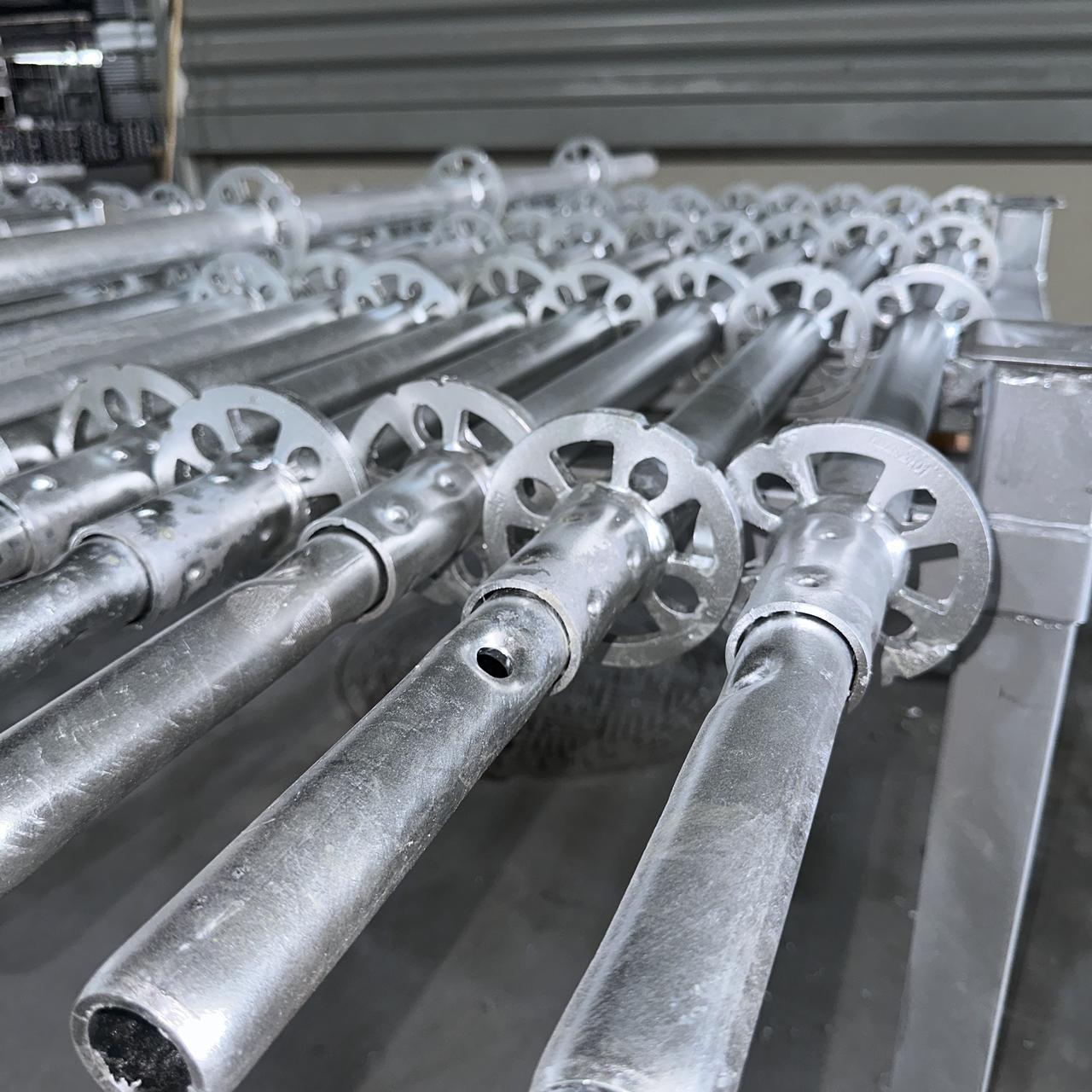
Ringlock scaffolding standards
5.Ideal Applications

Why HJ Scaffolding Recommends Ringlock
At HJ Scaffolding, we manufacture and export high-performance Ringlock systems backed by international certifications like ISO 9001, EN 1090, DASt022, and ISO 3834. Our in-house production includes laser cutting, robotic welding, and rigorous QC inspections, ensuring every component meets global standards.
Whether you're supplying scaffolding for a bridge in Europe or a high-rise in Southeast Asia, HJ Scaffolding delivers reliable Ringlock products — with customized designs, fast delivery, and responsive technical support.

Need Help Finding the Right Components?
Get in touch for tailored product recommendations, catalogs, and detailed specs. We’ll help you source a scaffolding system that meets your project needs — with precision, compliance, and confidence.
Web:www.hj-scaffolding.com
E-mail:lynn.li@hj-scaffolding.com
WhatsApp: +86 15058750031
